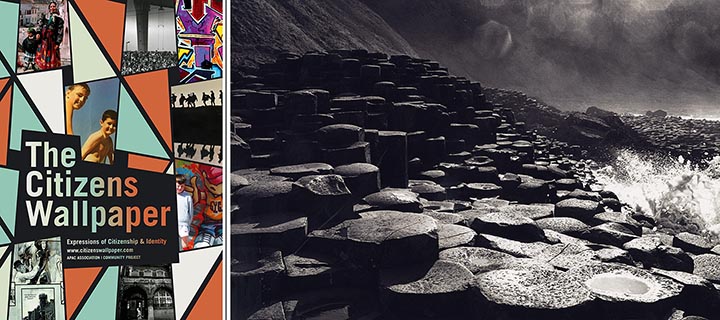
With her new sound installation, as part of the Citizens' Wallpaper Project, currently showing in Northern Ireland, Millie Taylor, Professor of Musical Theatre, reflects on her interest in the relationships between sound and image and how what you learn at university stays with you throughout your life.
I began my career with a degree in Music, Drama and Dance that included some incipient approaches to sound art and electronic composition. That was in the late 1970s and 1980s when technology was rather different - I learned about sound installation and musique concrète using four-track reel-to-reel tape machines and razor blades.
Later, as a professional musician and musical director I played early synthesisers (including the Yamaha DX7) and learned on the job about synthesising and sampling sounds. As an academic I have remained interested in the ways in which sound art can give voice to individuals in communities and can shape the ways audiences move through exhibitions and respond to visual materials.
Although not directly related, my most recent book Theatre Music and Sound at the RSC reflects this interest in the relationships between sound and image, and I've also written about the performative effects of sound in installation art.
Last year, I decided to return to making music rather than writing about it: using the ideas stimulated during my undergraduate degree I created an installation for the first time in almost 40 years.
After seeing award-winning photojournalist Martin Nangle's Citizens' Wallpaper project, that uses citizens' journalism and photojournalism to reflect contemporary culture, tradition, citizenship and identity, I suggested a collaboration with him. I would create sound art that had the same dramaturgical structure as he used for the wallpaper - a kind of tapestry.
This collaboration with Associated Photojournalism for Art and Culture (APAC) was launched with an exhibition at Flowerfield Arts Centre in Coleraine, Northern Ireland, with funding from the Arts Council of Northern Ireland and the Community Relations Council on 29 February. It will run until 28 March.
The exhibition features photojournalism by Martin Nangle and a sound installation by myself, alongside contributions from the Ballymoney Photographic Club and a number of volunteers in a citizens' journalism project.
I recorded conversations with people from all walks of life along the north coast of Northern Ireland last summer on a research trip, during which I also recorded atmospheric sounds on Rathlin Island and elsewhere. Since then I've been on a steep learning curve as I have had to learn about new software and hardware for composition and exhibition, ably supported by my colleagues on the University of Winchester BA (Hons) Music and Sound Production programme.
Recently, I flew to Portstewart to install the work and be present at the launch. The result is a six-minute soundscape that launches when a visitor enters the gallery - a kind of tapestry of voices and sounds comprising excerpts and key phrases from the interviews backed by the sounds of the sea, birds, boats, rain and motorbikes.
Separately, on headphones in the exhibition, audiences can hear excerpts from one of Seamus Heaney's poems, read by the author, with some atmospheric sounds that stimulate an emotional response.
Nangle commented, "The Citizens' Wallpaper project began as a visual expression reflecting on how citizens see their world. Millie Taylor's sonic art contribution brings a new dimension to this expression, where voices and sounds deliver stronger connections to an ever-increasing audience."
We are planning to develop the collaboration with further exhibitions in Belfast, Dundalk, and elsewhere, for which I've already begun gathering sounds during brief trips to Armagh, Enniskillen, Derry and Belfast.
The culmination of the Citizens' Wallpaper Project will be the exhibition of all the panels in a 65m-long canvas that reflects contemporary culture, tradition, citizenship and identity from the Atlantic Ocean to the Irish Sea, that will now have a sonic parallel.
And the moral is: the road might be circuitous, but what you learn at university, and the capacity for continuous development that is stimulated, stay with you throughout your life.
Press Office | +44 (0) 1962 827678 | press@winchester.ac.uk | www.twitter.com/_UoWNews
Back to media centre